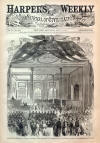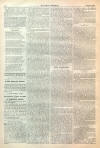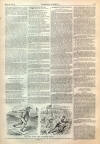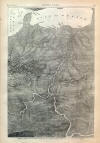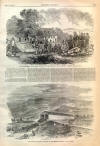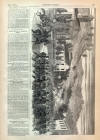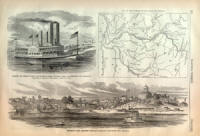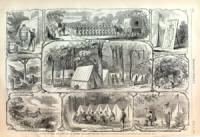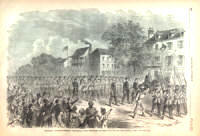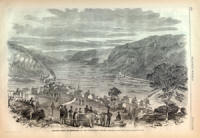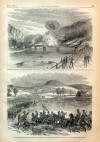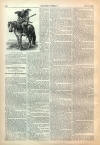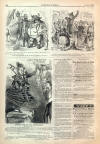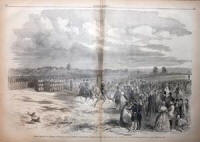The Battle of Romney
|
|
This Site:
|
JULY 6, 1861.] HARPER'S WEEKLY. 423 THE ENCAMPMENT OF THE FIRST CONNECTICUT VOLUNTEERS AT ROACH'S SPRINGS, VIRGINIA.—[SEE PAGE 427.]THE BATTLE OF ROMNEY.WE publish on this page a picture of THE BATTLE OF ROMNEY, where the Eleventh Indiana Regiment defeated a much larger force of Secessionists on 11th June. An attentive correspondent, Mr. Gookins, of the Eleventh Indiana, has sent us the sketch, which we reproduce, as also the following letter: CAMP M'GINNIS (CUMBERLAND, MD.), June 14, 1861. On the evening of the 12th of June Colonel Lewis Wallace, commanding the Eleventh (Zouave) Indiana Regiment, stationed at this place, having received intelligence of a camp of secessionists at Romney, Virginia, where they were said to be assembled in considerable numbers, well armed and equipped, also having erected a battery of two pieces of cannon, headed a detachment of four hundred men, of whom your correspondent was one, and leaving this place at nine P.M., proceeded by rail to Piedmont, twenty-one miles distant from here; there debarking, marched over a rugged mountain road twenty-three miles to Romney, arriving there at 9 1/2 A.M. June 13. On coming within a mile of Romney we were fired on by the picket-guard of the rebels, while passing through a defile walled in by tremendous cliffs. At the sound of the first gun, however, we deployed as skirmishers, and being scattered thus no one was hurt on our side. We returned their fire and killed one of the picket. He was seen to fall and slide down the side of the mountain about twenty feet, when his body lodged against a tree. We then ran forward, and passing out of the defile came to a long covered bridge. On the other side of the river the rebels had planted their cannon and trained them upon the bridge; our men, however, dashed forward through the bridge with a yell, when the cowards (of whom there was quite a large body posted on the hills) fled without firing a shot from their cannon. This is the subject of my illustration. On reaching the farther end of the bridge our advance was again fired on by a body of rebels who were posted in a brick house about seventy-five yards away from the bridge. Here the orderly-sergeant of Company A of our regiment was slightly wounded—not at all dangerously. The men ran forward, firing as they ran, riddling the house with Minie balls. The rebels, however, escaped by the back entrance into the hills back of the house. One more was killed here, and another very badly wounded in the thigh. While this was going on we were again fired on from the mountains back of us. No one hurt. We then moved forward to the town, where we learned for the first time, the number of the secession soldiery ; there were five companies of them in the aggregate—over four hundred men, well armed with Derringer rifles and United States muskets. In their retreat they were so pushed that they left behind their baggage, some rifles, tents, swords, pistols, etc., etc. We took seven officers' marquees, a quantity of uniforms, and large quantities of clothing, a secession flag, four horses (one of which was the rebel colonel's riding-horse), four large chests of ammunition, camp equipage, and a great variety of other articles. Three wagons were laden with the best part of things taken, and the rest were destroyed. We learned that the rebels had received information of our approach an hour before we arrived from a horseman. This enabled them to prepare for a retreat, and, much to our chagrin, they thus succeeded in saving their cannon. THE BATTLE OF ROMNEY—SKIRMISH AT THE BRIDGE.—[SKETCHED BY MR. GOOKINS.]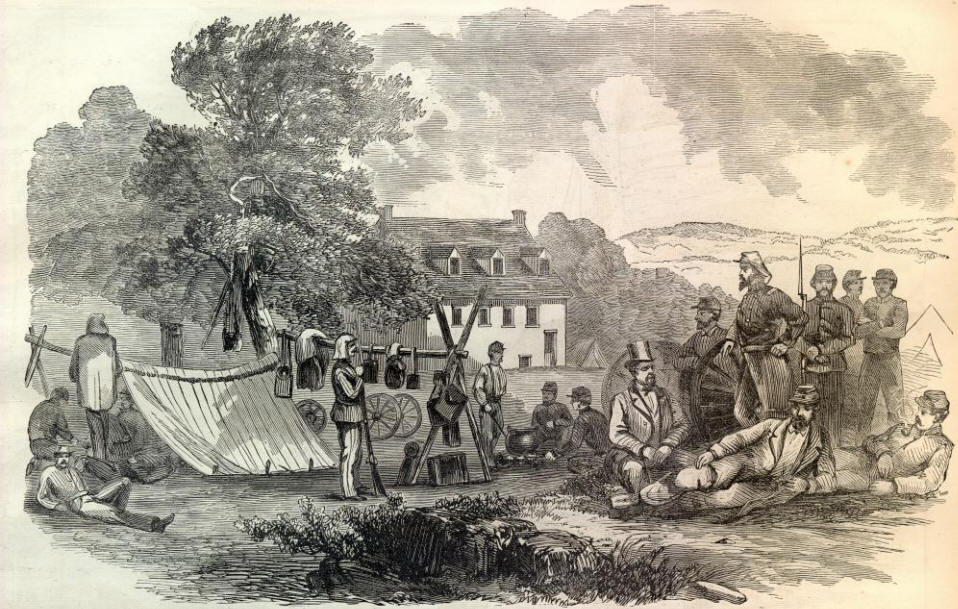 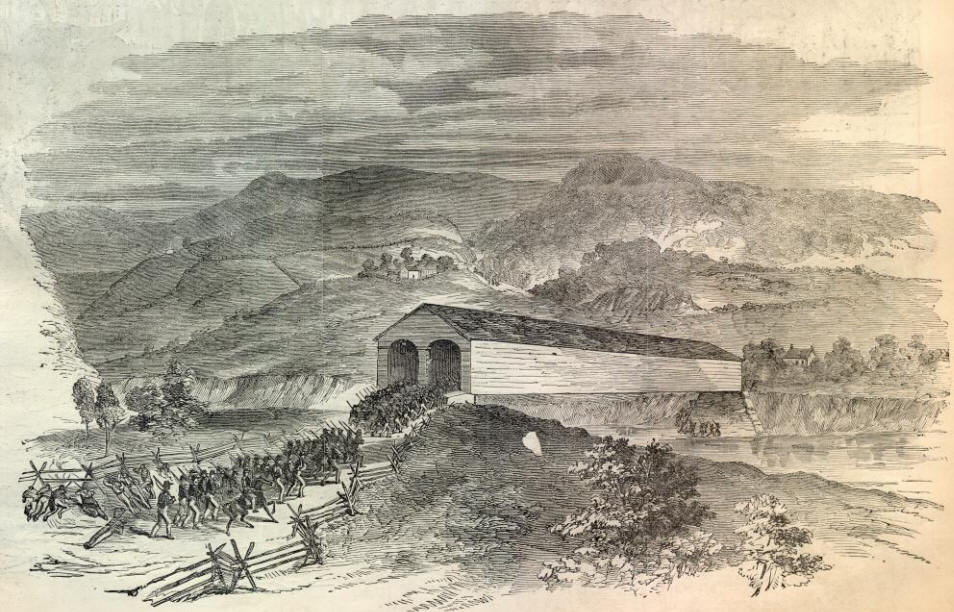 |
||||||||||||||||||||||||||||||
|
|
||
|
|
Site Copyright 2003-2018 Son of the South. For Questions or comments about this collection, contact: paul@sonofthesouth.net |
|
|
Are you Scared and Confused? Read My Snake Story, a story of hope and encouragement, to help you face your fears. |
||
